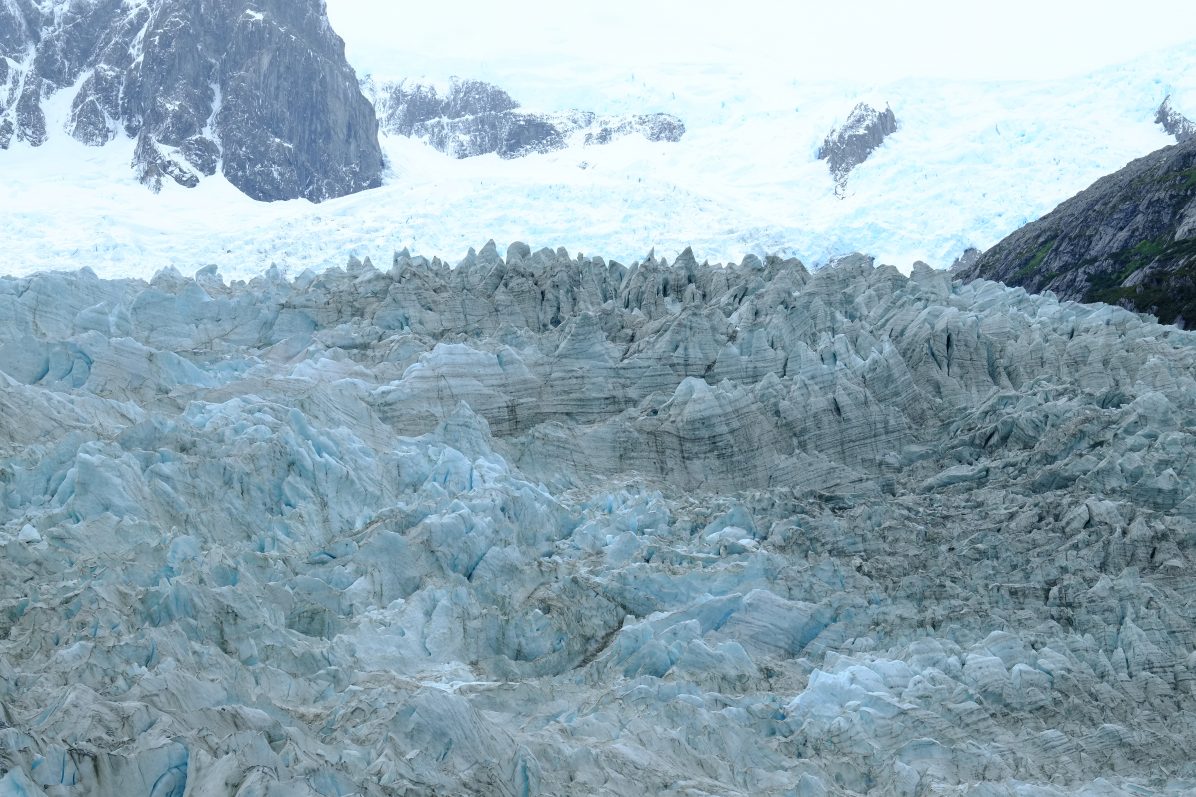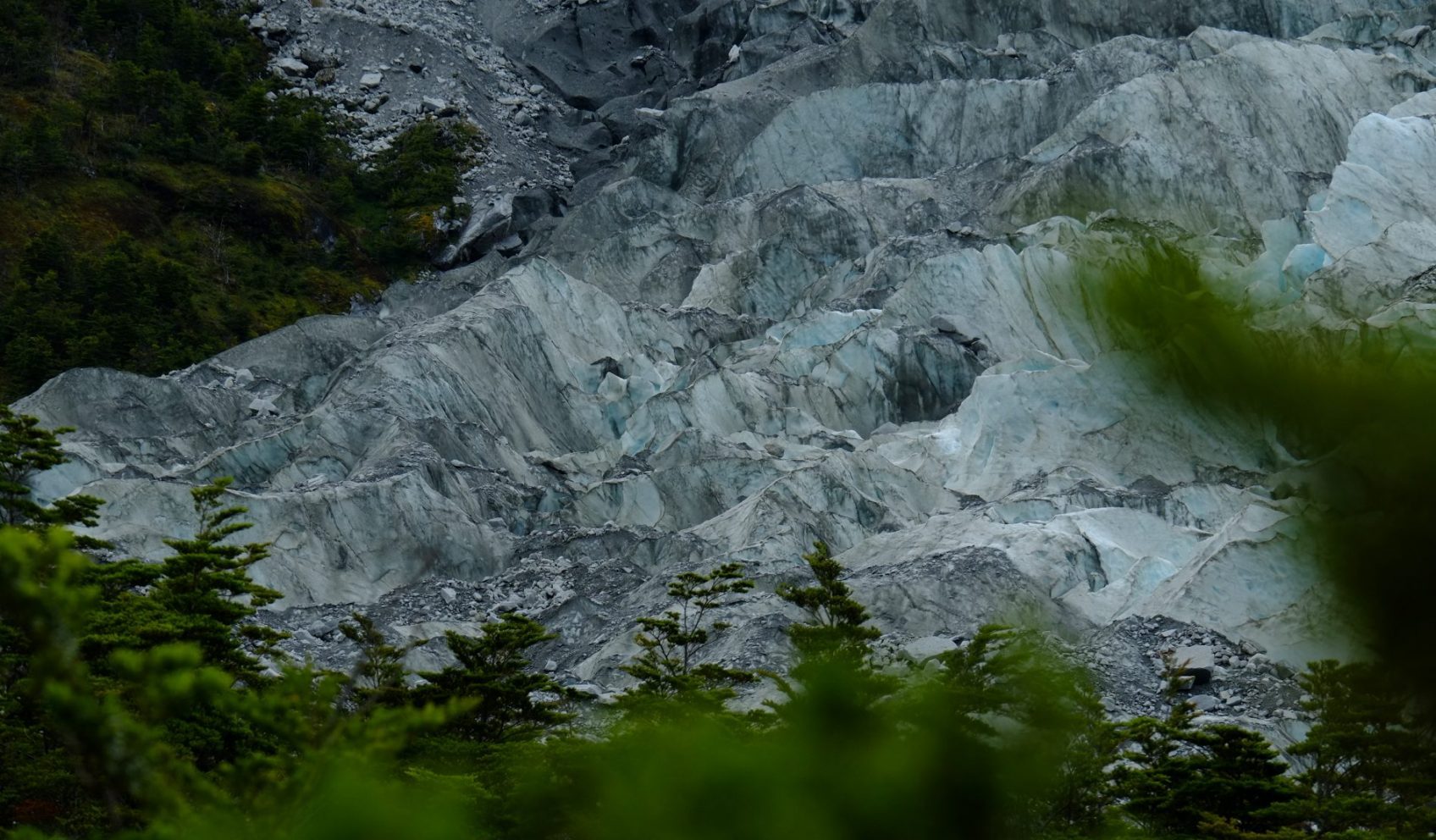Moraine is the name given to the piles of stones and other debris found in glaciers. When these have entirely disappeared, or when they have retired, we usually use the same term moraine with an adjective.
Moraine and glacier

First of all, to understand what a moraine is and why we find stones in a glacier, we have to look at how the glacier itself works. A glacier is a river of ice that flows down the slope and carries everything in its path. Even if it seems motionless, glaciers advance according to the climate, their size and especially their weight. Therefore, the stones can be carried away by the ice will be carried away at some point or another. And when they are not stones, the glacier sometimes detaches enormous blocks of stone or sections of cliffs from the mountain. Leaving clean, steep walls as if they had been cut with a knife. This phenomenon can is visible in the fjords, which are ancient glacial valleys.
The different types of moraines

Piles of stones can be found in different places on the glacier. Depending on their location, they will be given a specific name. There are a large number of them. However, when observing a glacier, the novice can immediately detect three types of moraines.
The three main types of moraines are :
Lateral moraine
The stones found on either side of the glacier are the lateral moraines. These are all the stones that are pushed back by the glacier’s advance or are blocks that are torn off the mountain wall.
Frontal moraine
As its name suggests, the frontal moraine is the pile of stones in front of the glacier. Anything in the glacier’s path is therefore swept away by a vast steamroller, just like a snowplough on the road or a bulldozer on a construction site.
Central (or median) moraine
This moraine is a number of stones usually trapped in the middle of the glacier and generally towards the surface. It should be noted that several central moraines can be found, depending on the typography of the terrain. Usually, the central moraine(s) cause large streaks that seem to give a rather strange appearance. One would even believe that the glacier is dirty, or that it is melting. When it isn’t, it’s just pebbles and stones that have been shipped up on the surface of a massive river of ice. And if the rocky debris is still stretched lengthwise, it’s a sign that the glacier is moving forward.
Other moraines that can be founded in a glacier
Apart from the moraines visible at first glance, there are, of course other piles of stone. For example, the materials carried along may be found under the glacier. In this case, we will call the stone debris under the glacier bottom moraine or deep moraine.
Another moraine, this time it is a bit sadder since it is the melting moraine. As you can see, it is all the small debris that has been crushed into a thousand pieces, and that was under the glacier. These appeared on the surface when the glacier melted. When the glacier has not entirely disappeared, we will call it a recession moraine.
Acknowledgements: the Australis company in Chile with whom I was able to explore the Pia glacier during navigation in Tierra del Fuego.
photo credits: Yann Vernerie